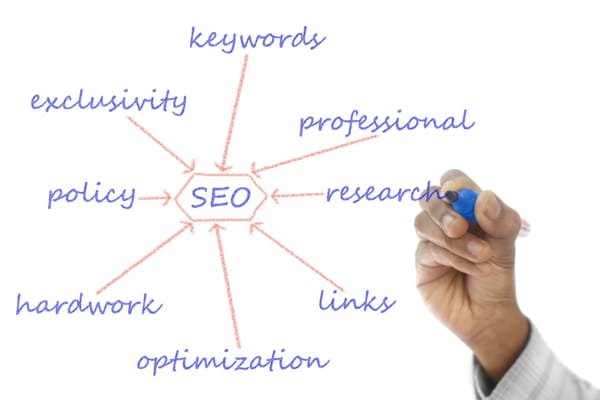
To optimize the text on your website without a specialist is not easy, but you can do it. You will need just a little more practice.
The visibility of your business in the online environment is directly influenced by the search engine indexing criteria. And yes, in case you’re wondering, content is still the king in 2022, but not as you used to.
As you can see, you still need to pay close attention to your online content. That’s why we will show you how you can handle the site text optimization processes yourself, without resorting to the services of an SEO specialist.
The content you put online is the way you interact with your customers and implicitly the way you carry out the sales and/or monetization process.
Of course, in order to reach your customers, your information must be visible and, preferably, positioned as high as possible in the organic results.
Read more, about SEO performance indicators to get a documented idea.
Find out how the text on your site can help you reach your target audience more easily.
Whether we like it or not, on-page and off-page SEO optimization techniques are still current and constantly adapting to the expectations of the end-user. In short, of the person accessing the information online, including you when you go through these lines.
Quality text, but not visible, is wasted content. You need to learn site text optimization techniques in order to successfully convey your information to potential customers, or to your target audience if we are talking about a blog.
And again we have to discuss search engine indexing algorithms. You have to start with these algorithms with your SEO analysis, and then with the actual implementation.
Your entire keyword and content plan will revolve around indexing criteria; otherwise, organic positioning will suffer.
On March 13, 2019, Google officially released a new update for its indexing algorithms. Of course, we could not continue our short site text optimization article without considering this true SEO manual written by Google itself.
The full text is somewhere around 160 pages, but if you don’t have enough patience to go through it in its entirety you can read our article about page quality rating.
With this theoretical information, we can start our analysis of the content in order to optimize the existing texts on your site.
(This post contains some affiliate links. Should you click an affiliate link and make a purchase I may receive a small commission at no extra cost to you.)
Website text optimization techniques: defining composition elements
To start optimizing the text on your site we need to clarify some aspects of composition. If you use WordPress then everything will be much clearer, although the information below can be applied regardless of the platform that underlies your online page.
Let’s briefly define these aspects:
- Page title: is the section that names the page, or the article in question. The title tells the search engine what the page will be about.
- Page URL: This is the link itself, the link that will make it possible for online content to interact with the end-user. It is the section displayed by the name of your site and usually includes the title of the page.
- The actual text: represents the content you put on the page to describe the services you offer or the information you want to convey. The text may also include content such as images, videos, buttons, and other elements to facilitate the transmission of information.
- Author: it is optional, but recommended. It is good to display who wrote the text along with a short introduction. This way you tell the reader what the author’s experience is regarding the information he described on the site page.
- Focus keyword: is the main keyword set for that page. Depending on the type of content, it can be short, or long-tail keywords. Learn how to do keyword research by reading our dedicated guide.
- The meta title is the title with the meta tag – it can be the same as the page title, or a different one with a keyword focus. This title is only displayed in the organic results. The previously defined title will be displayed on the site.
- Meta description: This is a short description of the content on your online page. This description will be displayed under the meta title in the organic views. It is optional, otherwise, Google will automatically retrieve a portion of the text (considered relevant) from your site’s page.
Now that we’ve defined these composition elements, let’s see how we can use them intelligently to apply site text optimization techniques. These techniques are the main methods of on-page SEO optimization, so pay close attention to the information described below.
Note: to describe this data more easily, we have chosen as a case study the article you are reading now.
Website text optimization: on-page SEO best practices
Choosing the most appropriate keyword focus
The optimization of the text must start from the analysis of the keywords. This word will tell the search engine what your online page is about. So choose it carefully after a keyword analysis.
You can use free tools that can help you find the best keyword recommendations based on your site’s domain – of course, the most recommended service is the one offered by Google, namely the Google Ads Keyword Planner, through which you can increase traffic on your site.
Choosing the meta title
Regardless of the original title, you gave to the page, or your article, you must also set a meta title. If you use WordPress this can be done easily, through a plugin (for example AIO).
For best results, the meta title should contain keyword focus at the beginning. This way, you will give authority to the chosen keyword and you will tell the search engine that you are not trying to provide information that will fool readers who come to your site.
The size of the meta title should not exceed 60 characters (including spaces), it should be on-topic and attract conversions (make you click to learn more). Of course, you should not disappoint the expectations of your readers – provide the content you promised.
Designing the meta description
Even if it is optional, the meta description must be implemented. Along with the keyword focus and meta title, it will tell the indexing algorithm that your text focuses on a specific topic. Thus, the organic results on the query you follow will position your site in the first results.
The meta description size must not exceed 160 characters (including spaces) and must contain keyword focus. This will increase the authority of the keyword proposed at the beginning.
We remind you, the meta description is not visible on your site. This text will appear in the organic results under the meta title.
Optimize the page URL
It would be best for the page or article link to contain keyword focus. If the page title contains it, then the URL will have it, which is great.
Shorten the URL, but keep its logic. As an advice, you can drop words that are not relevant, or that do not have a proper meaning (for example, you can delete link words, prepositions, etc.).
Choose the right images
Along with the text you put on the page, you have to choose the right images – that word, “an image is worth 1000 words”, right?
Well, choose clear, representative images for the subject approached. You can put as many images as you want, the more, the better. Of course, be careful not to overload the page just for the sake of images. All content must be relevant to the reader, otherwise, he will leave your site.
Rename the selected images based on the main keyword. When posting multiple images, go for variations of the previously set keyword focus.
Also, fill in the “other image” field because this element is seen as content by search engines – currently, Google does not “read” images, indexing algorithms only interpret the Html text that you enter.
Review the text on the site
Even if you set the main keyword next to the meta title and meta description, the optimization doesn’t stop there. You should also take a look at the content on the page.
Use keyword focus with a weight of up to 3% of the total number of words used. Apply it naturally and use an expression as clear as possible, for the understanding of your readers.
Use subtitles that contain the keyword, insert lists, and vary text content with images or videos.
Of course, it inserts internal links into relevant keywords: it creates a system of internal links. Do not walk the reader through the site just for the sake of doing so. If you put a link, it should lead to a page with information related to the home page. Otherwise, you will only succeed in annoying your target audience.
Sentences must be short and include cursive and coherent expressions. The text should be easy to read even by those who do not know them so well field your detail.
Always review and optimize the text you create
To optimize the text on the site never stops. As time goes on, it is advisable to continue on-page SEO optimization and bring new content to your existing page. This is a practice encouraged by indexing algorithms that emphasize the attention you pay to the text you have already created, but which may be out of date.
If needed, you can even modify the meta description and keyword focus to get different results in organic placements.
The only thing you don’t need to change is the page URL. If you do, you will generate a 404 error (page does not exist). In that case, you will need to redirect to the new page which means extra work and wasted time.
Conclusion
Finally, this is the information you need to keep in mind when looking for on-page SEO optimization for the texts on your site. Hopefully, that you will find this relevant data, and that you will be able to easily apply it on the WordPress platform, without using the help of a specialist. The WordPress optimization guide, we wrote for you can also help you with this.
As we stated at the beginning of this short article, the text is still in force and will remain so, as long as the information is transmitted online. It is important to know how to adapt the content we make to trends and for that, we are here to help you.









